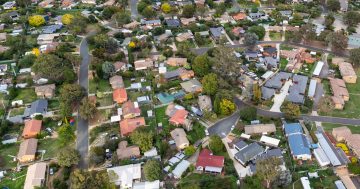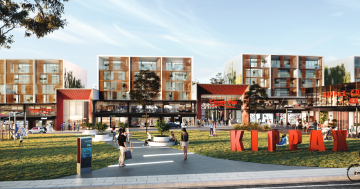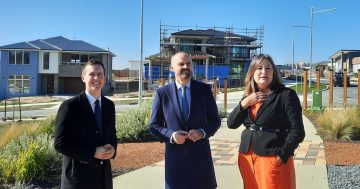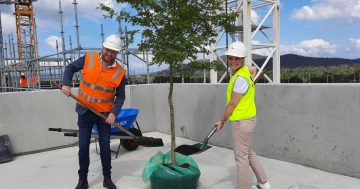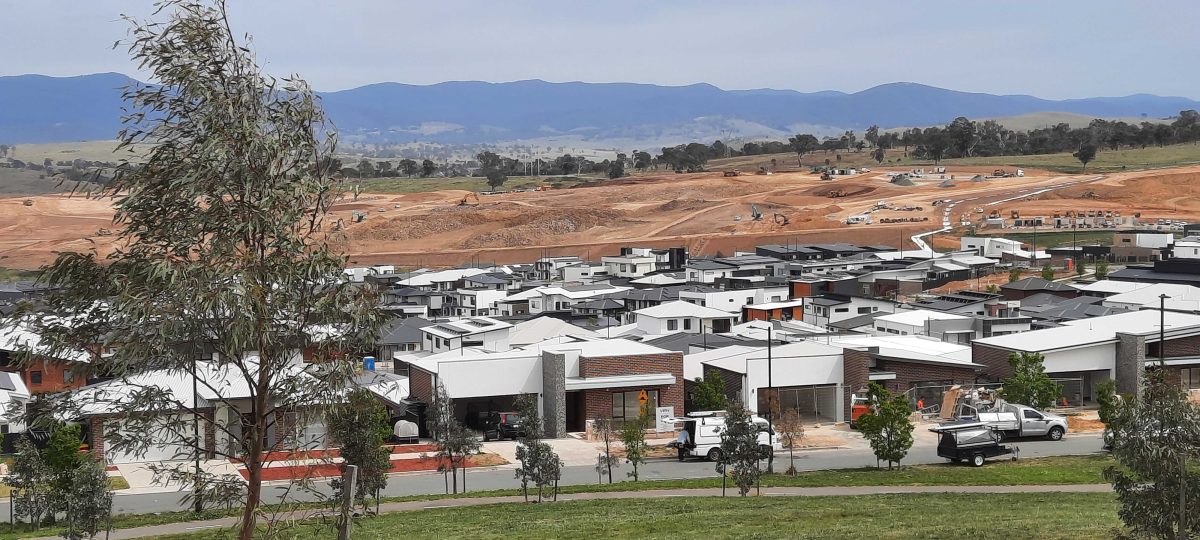
The ACT has the weakest detached housing sector in the nation, with approvals around record lows. Photo: Ian Bushnell.
Lease variation charge relief and more land releases are being urged to shake ACT detached home and townhouse sectors out of their doldrums.
The ACT has slipped to second from the bottom in the Housing Industry Association’s Housing Scorecard, which rates all eight jurisdictions on their housing supply. Only the Northern Territory scored worse than the ACT, which had been at the top of the table for a while during the pandemic.
But this quarter, the ACT ranked last in eight of the 13 categories.
The ACT had the weakest detached housing sector in the nation, with approvals around record low levels, while starts reached a record low of just 172 new houses in the latest quarter, 47.9 per cent below the decade average.
The ACT also had the weakest renovations sector in the nation, with spending on alterations and additions tumbling to 17.8 per cent below the decade average, the worst result since 2012.
However, the multi-unit market is one of the strongest in the nation. The volume of multi-units under construction is 21.8 per cent above the decade average, which is only bettered by South Australia.
Starts were just 15.2 per cent below the decade average, but given the state of the sector nationally, good enough to be outdone only by Queensland.
HIA ACT executive director Greg Weller said that while interest rates, the cost of living and borrowing constraints contributed to the subdued housing environment, the government still had levers at its disposal to bring more detached homes and missing middle townhouses to market.
Mr Weller said the lease variation charge was a killer for builders when it came to the smaller townhouse projects, which the government wanted more of.
“If there was one thing on the Christmas list that you could do to get more townhouses and get more of that product out there, it would be to do something about the lease variation charge,” he said.
At $50,000 a dwelling, it made a big difference to the feasibility of such projects, Mr Weller said
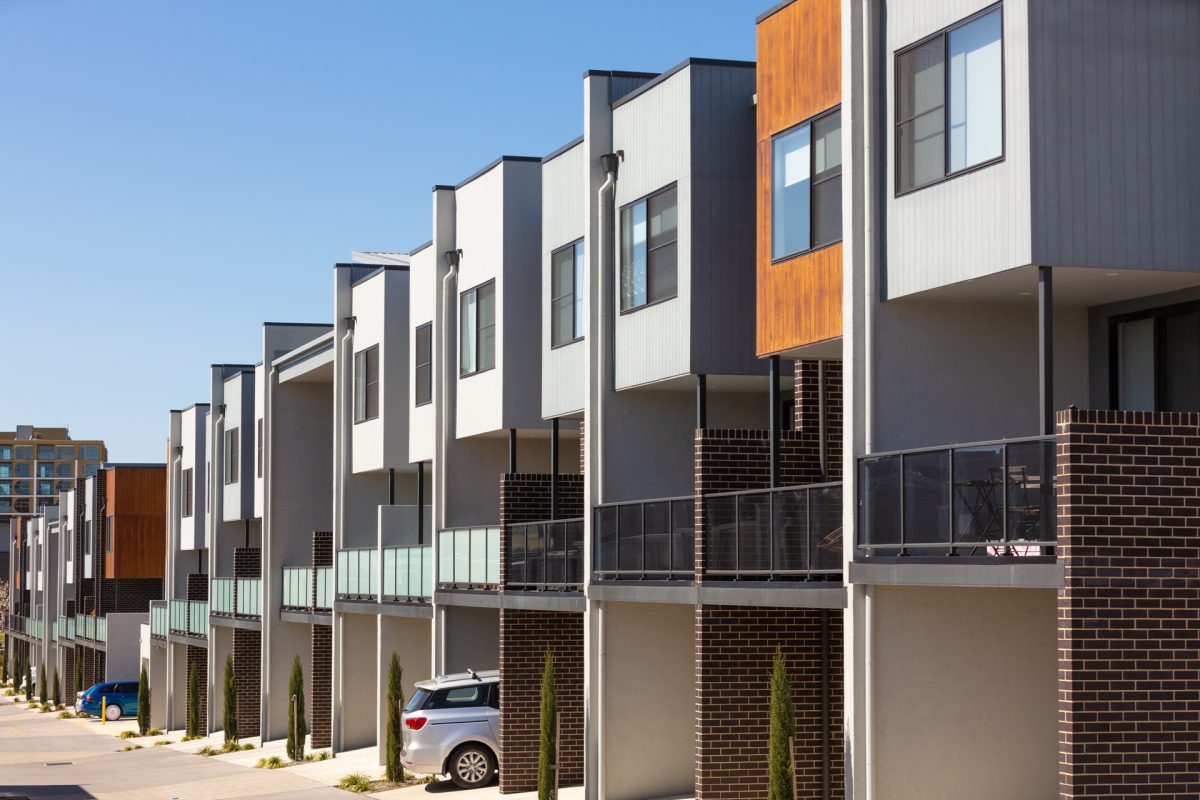
More townhouses are wanted, but the HIA says the lease variation charge is a disincentive. Photo: Michelle Kroll.
He said the LVC and the 120 sqm limit on secondary homes on blocks over 800 sqm were also combining to thwart the intention of a range of new homes emerging in established suburbs.
The move to allow unit titling in RZ1 areas excited property owners and builders, but the size limit “killed it stone dead” by making the idea too costly and denying any reasonable rate of return.
Mr Weller urged the government to consider a one or two-year trial of an LVC exemption on the unit titling in RZ1 one or some of the townhouse developments and see what happens.
“For the stuff that we’re really trying to build a lot more of it, it’s crazy that you have a tax that basically the more houses you build, the more taxes you’re going to pay. It’s a real disincentive,” he said.
Mr Weller said land was still too expensive, and some blocks were still sitting on the shelf, suggesting that they were not being offered at the market rate.
He said that during COVID, the price of land rose quickly, but now that blocks were not moving, it hadn’t fallen at the same rate.
“There’s work to be done there to ensure that there’s flexibility in what the market rate of land is in the ACT. That’s an opportunity for the government to consider its approach there.
“But I think the best thing to do to ensure that prices are reasonable is to make sure there’s plenty of supply available.”
Mr Weller said that although the government had announced an increase in land releases, it needed to be more transparent about how it would achieve this.
He also called for a 10 to 15-year pipeline, with the first five years of releases to be reasonably certain and the rest to be indicative.
“So a longer horizon, a lot more transparency and more reasonable prices is what we’re needing in the greenfield suburbs,” Mr Weller said.
He welcomed the government’s move to bring transport, planning and development together into one directorate.












